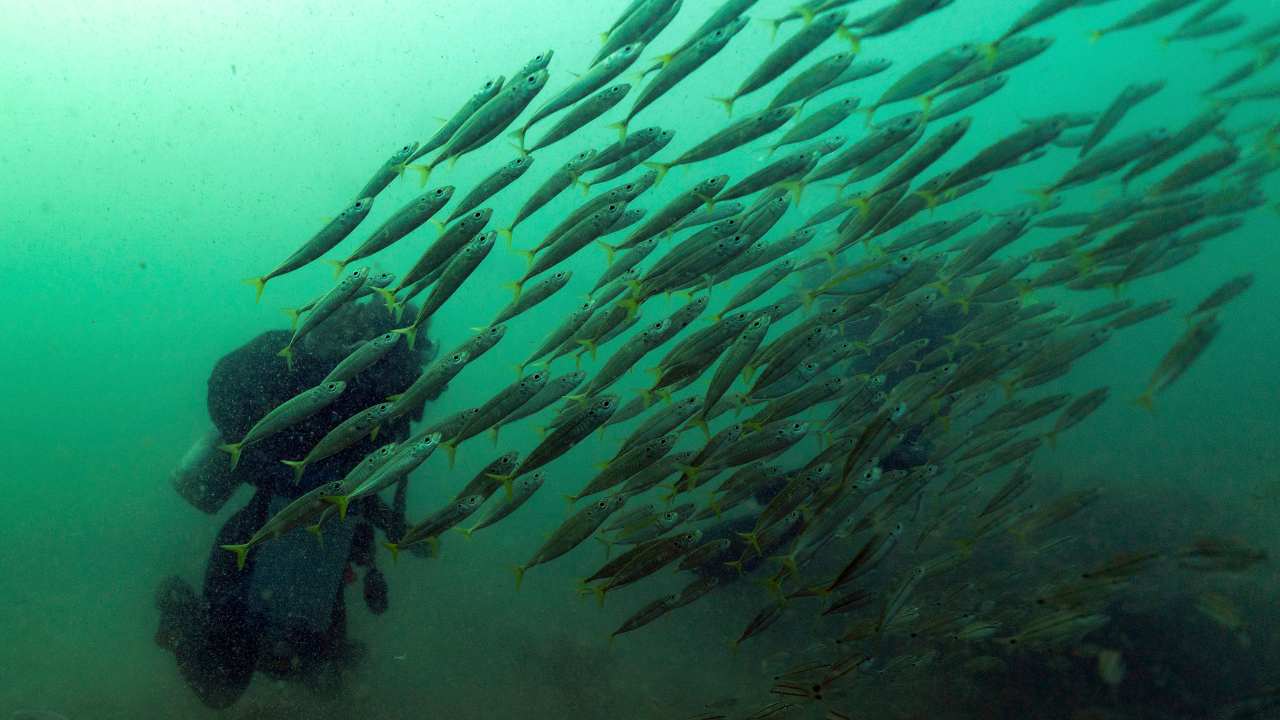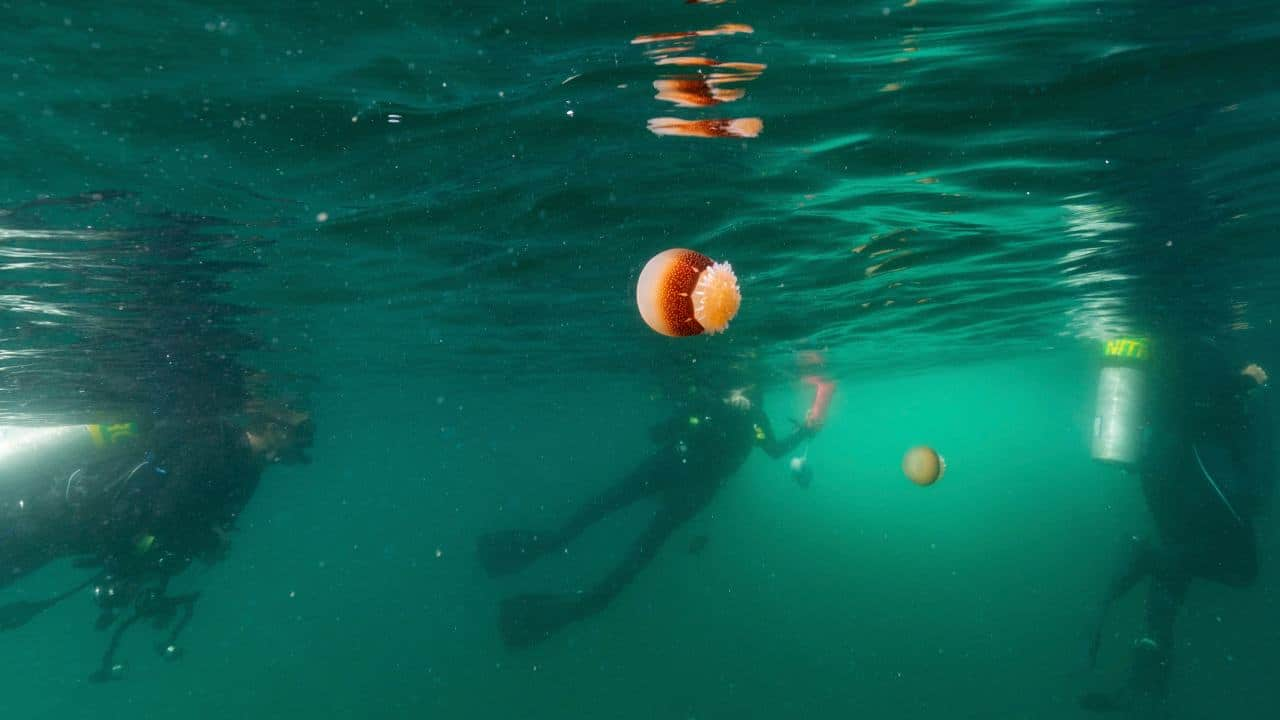From the surface, these 22 square miles of water are unexceptional. But dip beneath the surface — go down 60 or 70 feet — and you’ll find a spectacular seascape. Sponges, barnacles and tube worms cover rocky ledges on the ocean floor, forming a “live bottom.” Gray’s Reef is little more than a drop in the ocean 19 miles off the Georgia coast, but don’t confuse size for significance. In one of his last official acts, President Jimmy Carter declared the reef a national marine sanctuary at the urging of conservationists who said its abundance of life was unique and worth saving for future generations. For nearly 40 years, the U.S. government has protected the reef, home to more than 200 species of fish and an amazing array of nearly 1,000 different kinds of invertebrates. Recreational fishing and diving are allowed, but commercial fishing and other kinds of exploitation are not. And Gray’s Reef has served as global inspiration. Following the lead of the US, other nations have designated similar sanctuaries and protected areas, which now cover about 6 percent of the world’s oceans — a bonanza for researchers but, more importantly, an important tool for safeguarding the seas. [caption id=“attachment_7727951” align=“alignnone” width=“1280”]
 Scad swim past divers geospatial analyst Alison Soss and research coordinator for Gray’s Reef National Marine Sanctuary Kimberly Roberson 28 October. Image: AP[/caption] Doubts remain about how much of the ocean they can truly save. Last year was the hottest on record for the planet’s oceans, and protected areas can’t slow the biggest source of that warming — increasing greenhouse gases. The federal government says more than 90 percent of the warming that has occurred on the planet over the past half-century has taken place in the ocean. That has had dramatic effects in the waters that cover 70 percent of Earth’s surface. Scientists have tied the warming to the rise of sea levels, the disappearance of fish stocks and the bleaching of corals. The ocean also has become more acidic as humans have released higher concentrations of carbon dioxide into the atmosphere, and that jeopardizes valuable shellfish and the plankton that form the base of the food chain. The supporters for the protected areas range from sustenance fishermen on the tiniest islands of the Pacific to researchers at the most elite institutions of academia. On a National Oceanic and Atmospheric Administration expedition to Gray’s Reef, the federal research vessel Nancy Foster is packed with scientists conducting research on subjects ranging from whether invasive lionfish are present to how changing ocean conditions are affecting coral species. [caption id=“attachment_7728001” align=“alignnone” width=“1280”] Black sea bass, red snapper and tomtate swim over a carpet of invertebrates and algae at Gray’s Reef. Image: AP[/caption] Sanctuary research coordinator Kimberly Roberson and other scientists prepare to dive to collect data about what fish can be found in the area, while Craig Aumack, an assistant professor of biology at Georgia Southern University, peers through a microscope at algae. Aumack notes that more types of seaweed and tropical species of fish are appearing on the reef as waters warm, like the odd-looking and colorful clown wrasse, a fish native to the Caribbean Sea that was found off the coast of Georgia this summer, most likely pushed hundreds of miles to the north by changing ocean temperatures. The sanctuary is named after Milton “Sam” Gray, a biologist who studied it in the 1960s and identified it as an ecosystem worth saving — a reef not far from the U.S. coast that teemed with life, especially an “abundance of diversity of invertebrates,” Roberson notes. Without that designation, the habitat could have vanished due to high-impact industries such as bottom-trawl commercial fishing, which are now prohibited there. “In some ways, it’s a test of what a marine protected area can do for surrounding areas,” says Clark Alexander, director and professor at the University of Georgia Skidaway Institute of Oceanography and a former member of the sanctuary’s advisory board. “It was sort of an ideal spot to preserve this kind of habitat and make it available for research and recreation.” In the decades since Gray’s was established, large and more stringently protected zones have popped up all over the world. [caption id=“attachment_7727981” align=“alignnone” width=“1280”]
 Cannonball jellyfish float in the water as scuba divers surface after diving at Gray’s Reef National Marine Sanctuary 28 October 2019. Image: AP[/caption] Phoenix Island Protected Area, established in January 2008, covers more than 150,000 square miles off the tiny island republic of Kiribati and has been cited by scientists for bringing back species of fish in just over a decade. And an area nearly twice as large, the Rapa Nui Marine Protected Area, now surrounds Easter Island after its creation in 2018. Former U.S. Presidents George W. Bush and Barack Obama greatly expanded the U.S.’s protected areas. Bush created the Papahanaumokuakea Marine National Monument off Hawaii and Obama extended it late in his presidency to a whopping 582,578 square miles. Smaller protected areas, such as the 5,000-square-mile Northeast Canyons and Seamounts National Monument off New England, created by Obama in 2016, also have been established. Nine years ago, the UN Convention on Biological Diversity agreed to the goal of protecting 10 percent of the world’s oceans by 2020. The UN said in 2017 that it was on its way to meeting that target and that protected areas “contribute substantial social, economic and environmental benefits to society” and “provide food security and livelihood security for some 300 million people.”
Cannonball jellyfish float in the water as scuba divers surface after diving at Gray’s Reef National Marine Sanctuary 28 October 2019. Image: AP[/caption] Phoenix Island Protected Area, established in January 2008, covers more than 150,000 square miles off the tiny island republic of Kiribati and has been cited by scientists for bringing back species of fish in just over a decade. And an area nearly twice as large, the Rapa Nui Marine Protected Area, now surrounds Easter Island after its creation in 2018. Former U.S. Presidents George W. Bush and Barack Obama greatly expanded the U.S.’s protected areas. Bush created the Papahanaumokuakea Marine National Monument off Hawaii and Obama extended it late in his presidency to a whopping 582,578 square miles. Smaller protected areas, such as the 5,000-square-mile Northeast Canyons and Seamounts National Monument off New England, created by Obama in 2016, also have been established. Nine years ago, the UN Convention on Biological Diversity agreed to the goal of protecting 10 percent of the world’s oceans by 2020. The UN said in 2017 that it was on its way to meeting that target and that protected areas “contribute substantial social, economic and environmental benefits to society” and “provide food security and livelihood security for some 300 million people.”
In the decades since Gray’s Reef was developed, many stringently protected zones have popped up all over the world.
Advertisement
End of Article


)
)
)
)
)
)
)
)
)



